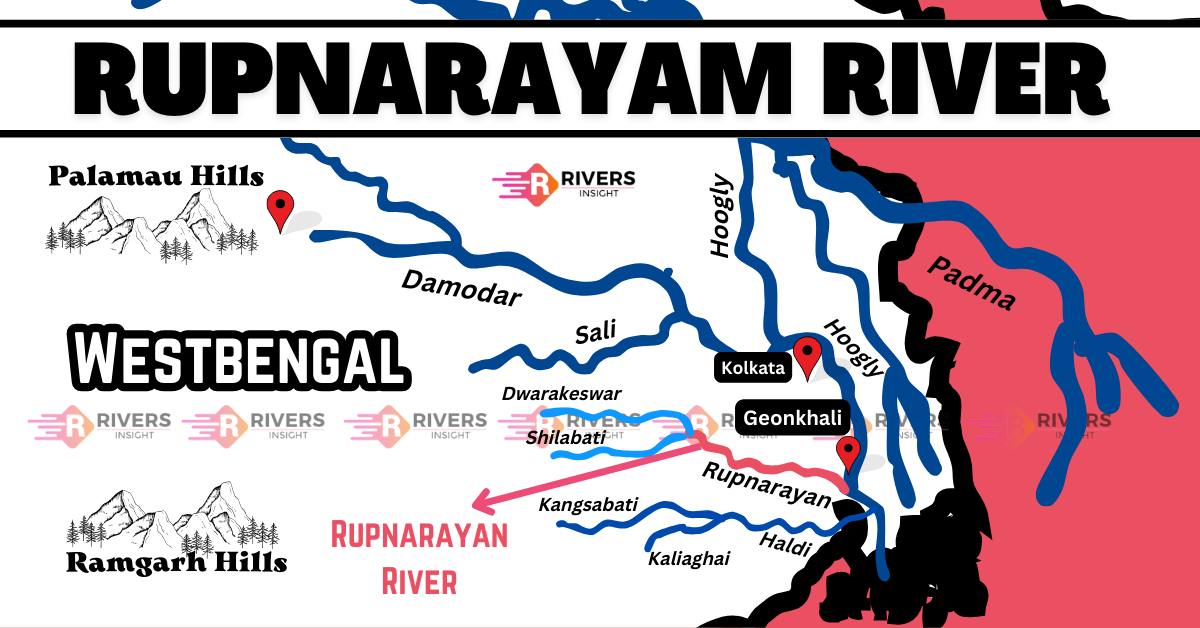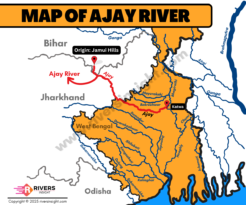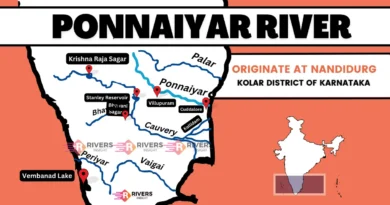Rupnarayan River: Map & Tributaries
Rupnarayan River is a significant tidal freshwater river in West Bengal, India. It originates from the confluence of the Dwarakeswar and Shilabati Rivers near Ghatal in Paschim Medinipur district and eventually merges with the Hooghly River at Geonkhali in Purba Medinipur district. Notably, the Kolaghat Thermal Power Plant, one of West Bengal’s major power stations, is located on its banks.
Table of Contents
Origin and Course of Rupnarayan River
The Rupnarayan River originates from the confluence of the Dwarakeswar and Shilabati Rivers near Ghatal in Paschim Medinipur district, West Bengal. From there, it flows southeastward, gradually widening as it moves downstream. Eventually, the river merges with the Hooghly River at Geonkhali in Purba Medinipur district.
Places Along the Rupnarayan River
- Ghatal, Paschim Medinipur (origin point)
- Kolaghat, Purba Medinipur (industrial hub)
- Geonkhali, Purba Medinipur (merges with Hooghly)
- Bagnan, Howrah (forms district boundary)
As the river flows through these regions, it receives water from the Mundeswari Channel and Old Kansai (Palaspai Creek), further increasing its volume before meeting the Hooghly River.
Catchment Area
The Rupnarayan River network is spread across a catchment area of 1,145 square kilometers, covering multiple districts in West Bengal. The river system is bordered by:
Bordering Districts:
- Hooghly (East)
- Purulia (West)
- Bankura (West & East)
- Paschim Medinipur (South)
- Bardhaman (North)
Tributaries of the Rupnarayan River
The Rupnarayan River receives water from several important tributaries:
1. Dwarakeswar River
- Originates in the Purulia district and is the largest river in the Bankura district.
- It receives water from the Gandheswari, Adusha, and Borai tributaries.
- Merges with the Shilabati River at Ghatal, forming the Rupnarayan River.
2. Shilabati River
- Originates in the Purulia district and flows southeastward.
- Receives tributaries such as Jaypanda, Kulbai, Tamal, and Parang.
- Joins the Dwarakeswar River at Ghatal to form the Rupnarayan River.
3. Mundeswari Channel
- A major distributary of the Damodar River, joining Rupnarayan near Baguhana.
- Contributes significantly to the water flow and tidal characteristics of the river.
4. Old Kansai (Palaspai Creek)
- Adds to the downstream widening of the Rupnarayan River.
- A branch of the Kangsabati River is merging at Gopiganj.
If you found this article helpful or have any additional insights about the Rupnarayan River, feel free to share your thoughts in the comments below!




